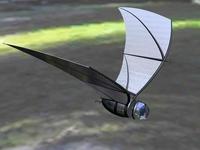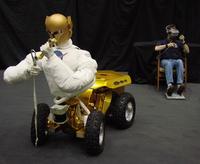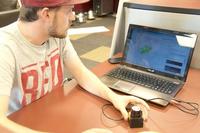-
Feds, rail operators, Washington State embroiled in crude oil shipment disclosure dispute

Last month the U.S. Department of Transportation(DOT) ordered rail carriers with trains carrying crude oil to notify state officials in the states through which the trains pass about the volume, schedule, and routes of these trains. The amount of crude oil transported by trains has grown dramatically – from 6,000 carloads in 2005 to more than 400,000 carloads in 2013. The increase in the volume of crude oil shipping has been accompanied by a sharp rise in the number of accidents and derailments. DOT’s order was meant to allow states’ first responders to be prepared, but the railways treat shipping information as “security sensitive” and refuse to share it with states’ officials unless the information is distributed to emergency response groups for planning purposes only. Washington State says that state laws require that such information be made public.
-
-
All-natural mixture offers promising fire retardant
What sounds like fixings for a wizard’s potion — a dash of clay, a dab of fiber from crab shells, and a dollop of DNA— actually are the ingredients of promising green fire retardants invented by NIST researchers. Applied to polyurethane foam, the bio-based coatings greatly reduced the flammability of the common furniture padding after it was exposed to an open flame. Peak and average rates of heat release — two key indicators of the magnitude of a fire hazard — were reduced by 48 percent and 77 percent.
-
-
Rio builds a high tech integrated urban command center

Rio de Janeiro is one of the most densely populated cities in South America. Much of the city is vulnerable to flooding, and about three-quarters of Rio’s districts have areas at risk of landslides. High temperatures can make living situations unbearable. In addition, a high crime rate and poor infrastructure make the city difficult to govern. In preparation for the 2014 World Cup and 2016 Summer Olympics, authorities are looking to improve response times to disasters and establish a more efficient system to deal with the city’s many challenges. One of the solutions is a high tech integrated urban command center — Centro de Operações Preifetura do Rio de Janeiro (COR) – which unites Rio’s thirty departments and some private suppliers in a single monitoring room where operators can track real-time conditions of the city and coordinate a response to emergencies and disruptions.
-
-
Nature-inspired designs for drones of the future

Based on the mechanisms adopted by birds, bats, insects, and snakes, fourteen research teams have developed solutions to some of the common problems that drones could be faced with when navigating through an urban environment and performing novel tasks for the benefit of society. Whether this is avoiding obstacles, picking up and delivering items, or improving the take-off and landing on tricky surfaces, it is hoped the solutions can lead to the deployment of drones in complex urban environments in a number of different ways, from military surveillance and search and rescue efforts to flying camera phones and reliable courier services.
-
-
Texas cities adopt 911 texting

Adding to the rising number of U.S. cities that accept 911 emergency texts, North Texas public safety agencies will now institute the procedure at their response centers. 911 emergency texting not only helps the deaf, but it better caters to younger generations that do not recognize as much the divide between text and voice communications. The texting of additional media such as photos before the responders reach the site could also have a profound impact on the development of an emergency situation.
-
-
Colorado tries to increase safety of urban development in wildfire-prone areas
Colorado continues to deal with the challenge of building new urban developments while reducing wildfire risks. There are currently 556,000 houses built in burn zones around the state, and the demand for water to sustain residents and industries continue to rise. A new study predicts that development will occupy 2.1 million acres in wildfire-prone forests by 2030, an increase from one million acres today — just as wildfires continue to burn roughly 900,000 acres a year since 2000, compared with just 200,000 acres a year in the 1990s.
-
-
Pandemics: who should be given life-saving treatment first? Who should make the decision?
In the event of a flu pandemic, who should have priority access to life-saving ventilators, and who should make that determination? Few disaster preparedness plans have taken community values regarding allocation into account, but a new study is aiming to change that through public engagement with Maryland residents. “In the event of a healthcare crisis, understanding the community perspective and having citizen buy-in will be critical to avoid compounding the initial disaster with further social upheaval,” says the principal investigator.
-
-
Improving gloves to enhance first responders’ safety
Firefighters wear protective gloves called “structure gloves” to keep their hands safe on the job. The structure gloves currently used by firefighters, however, are not designed for the precision movements first responders must perform. There are many different types of structure gloves available, but none fully satisfies modern firefighters’ needs. Today’s compact tools often have small buttons that require nimble movements. Bulky gloves can make it difficult for firefighters to complete simple tasks without removing their gloves and compromising their safety. As advanced textile technology and materials continue to develop, the science behind firefighter structure gloves has adapted.
-
-
Fire experiments will test new firefighting tactics
Fire researchers at the National Institute of Standards and Technology (NIST) will return to Spartanburg, South Carolina, on 15-21 May 2014, as part of a collaborative effort on a series of controlled-burn experiments in detached single-family homes slated for demolition. Measurements of temperature, total heat flux and other ground truth data gathered during the live fire experiments will help the NIST team and its partners to further assess the effectiveness of new fire-suppression tactics known as transitional fire attack.
-
-
Teleoperated robots for smarter disaster response

Electrical engineers have developed telerobotics technology which could make disaster response faster and more efficient. The researchers aim to combine existing “smart” technologies better to serve society during disaster and crisis response. This includes using teleoperated robots for rescues and safety operations; a high-tech dispatch system that gathers information from cameras and sensors and pushes it out to first responders; drones for damage surveillance and rescues; and vests outfitted with sensors and GPS tracking to be worn by search-and-rescue dogs.
-
-
Room-scouting robot to help first responders, soldiers

Firefighters, police officers, and military personnel are often required to enter rooms with little information about what dangers might lie behind the door. A group of engineering students at Arizona State University is working on a project which would help alleviate that uncertainty. The product they are building consists of a laser sensor attached to a motor that sweeps all the way around a room, taking 700-800 individual scans, each one with about 680 unique data points. This information is transmitted to a computer program that creates a picture of the room and all its contents. Whoever is controlling the sensor remotely can see and analyze the data in real-time, as it is being collected.
-
-
Public safety officials implement Boston bombing's lessons
The use of improvised tourniquets to stop bleeding was considered not only old-fashioned, but potentially damaging. Yet, in the minutes following the Boston marathon bombing, people near the finish line used improvised tourniquets to stop the bleeding of dozens of those injured around them while waiting for medical crews to arrive. Security and public safety officials have used lessons learned from the 2013 Boston Marathon bombing to prepare for this year’s event, including providing police officers with tourniquets. Organizers of large public events are implementing other lessons from the 2013 attack.
-
-
Report details first-response lessons from Boston Marathon bombing
Last Thursday, DHS released a 19-page report titled “Boston One Year Later: DHS’s Lessons Learned,” detailing three topics which were a focus of attention in the aftermath of the Boston Marathon bombing. The report discussed the “importance of partnerships,” the “need for effective and reliable communications,” and the need to further boost anti-radicalization efforts.
-
-
Learning from ant colonies how to evacuate disaster zones
An escape route mapping system based on the behavior of ant colonies could give evacuees a better chance of reaching safe harbor after a natural disaster or terrorist attack by building a map of showing the shortest routes to shelters and providing regular updates of current situations such as fires, blocked roads, or other damage via the smart phones of emergency workers and those caught up in the disaster.
-
-
2014 edition of updated first responder biodetection technology guide available
A 2014 update to a detailed product guide listing biodetection technologies and sampling products is now available. The updated digest, Biodetection Technologies for First Responders: 2014, provides a comprehensive compilation of commercially available detection devices and products published to help first responders when purchasing equipment and supplies needed to rapidly assess biological threats.
-
- All
- Regional
- Water
- Biometrics
- Borders/Immig
- Business
- Cybersecurity
- Detection
- Disasters
- Government
- Infrastructure
- International
- Public health
- Public Safety
- Communication interoperabillity
- Emergency services
- Emergency medical services
- Fire
- First response
- IEDs
- Law Enforcement
- Law Enforcement Technology
- Military technology
- Nonlethal weapons
- Nuclear weapons
- Personal protection equipment
- Police
- Notification /alert systems
- Situational awareness
- Weapons systems
- Sci-Tech
- Sector Reports
- Surveillance
- Transportation
Advertising & Marketing: advertise@newswirepubs.com
Editorial: editor@newswirepubs.com
General: info@newswirepubs.com
2010-2011 © News Wire Publications, LLC News Wire Publications, LLC
220 Old Country Road | Suite 200 | Mineola | New York | 11501
Permissions and Policies
Editorial: editor@newswirepubs.com
General: info@newswirepubs.com
2010-2011 © News Wire Publications, LLC News Wire Publications, LLC
220 Old Country Road | Suite 200 | Mineola | New York | 11501
Permissions and Policies
